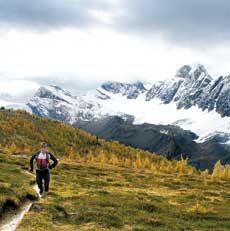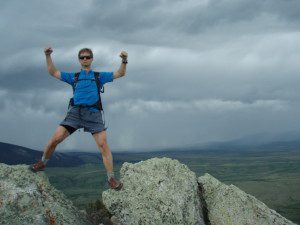The rules of ‘Fastest known time’ attempts

The new thing among runners here in Canmore is going after something called “fastest known times” (FKT) for a number of the peaks in the area. The athletes chasing these are in the trail running community, and very accomplished. They’ve raced a lot, train regularly on these trails and climbs, and have years of mountain running experience. What I find interesting, though, is that locally, the number of attempts at FKTs is creeping up this year as runners choose these challenges instead of (or in addition to) big races.

There have been two FKT attempts in Canmore: recently, one for the triple crown (Lady Mac, Ha Ling, and EEOR), and one for the Quad (Grotto, Lady Mac, EEOR, and Ha Ling). All are mountain summits over 2400 metres, with steep, rocky approaches. Ha Ling is probably the most accessed summit, and Grotto the least. The typical way to approach either challenge is to bang off Grotto and Lady Mac first, and then Ha Ling and EEOR.
I was lucky enough to be invited along to pace my friend Amy in her triple crown attempt last week, joining her for Ha Ling and EEOR. While running, I learned that there were some grey areas in the record she was going for, which caused me to question why there were no clearer definitions for our local FKT attempts. In places like Great Britain, there are a number of local tracks that exist for record attempts, such as the Charlie Ramsay Round, Bob Graham Round, or the Paddy Buckley Round, all of which have specified criteria for a proper assault on the 24-hour time limit.
Following my experience pacing the triple crown, I chatted with Phil Villeneuve and some other friends about what criteria should be used to define our local FKTs. We agreed that part of the fun is that it’s not a race, or a sanctioned event, and the challenge is in pushing yourself to achieve your best, however, it’s always easier if there are some “rules” to guide these efforts. After a few beers, and a lot of back and forth, here is a list of points that we consider significant if the FKT is to be counted.
- Designated start: In Canmore, the triple crown starts and finishes at the historic Georgetown Inn. The Quad has started and finished in different locations but for consistency (and to avoid distance arguments), should also start and finish at the Georgetown Inn. Besides, they’ll give you a free beer and a mug for your efforts so it’s not a bad way to end a grueling day.
- Time Keeping: While it is important to track your own progress, there should be independent time keeping as well. Starting at the Georgetown Inn will allow for this, as the clerk can record start and finish time. This also resolves the issue of forgetting to turn-off auto-stop features on watches, or rechargeable GPS watch batteries dying mid-attempt.
- Running Time: All FKT attempts should have a running time where the clock starts when they leave the Inn, and stops when they return. No time credits for bad weather, lunch breaks, etc. Translation – time to learn to eat on the run folks!
- Support: Athletes can perform better if they have friends or family providing support, such as food/drink refills, or even pacing duties, so planning to receive aid or support on these FKTs is encouraged.
- Route: This is a tricky one. Ultimately, the FKTs come down to reaching each summit and ideally, taking a summit photo (always including a summit feature such as a cairn etc., if one is present). The order of mountains summited doesn’t need to be fixed, but for consistency, athletes should try to travel on the main trails/paths as much as possible, although in the mountains, and especially above treeline, this is not always clear. Straight lining descents, or taking short cuts does not fit with the spirit of the challenge and should be avoided.
- GPS and Watches: We’re in an era now where watches like the Suunto Ambit 2 (with long battery lives) do a great job of recording your GPS track, altitude, etc. Here is current quad record holder (10 hours, 39 minutes) Andy Reed’s GPS track for his record-setting run. For the most part, they seem to hold a pretty accurate track, and will offer route guidance for future challengers. GPS tracks also provide another layer of support for the accomplishment.
Some may feel that FKT attempts should be left free and loose, and up to the participant to decide how they want to do it, but for those who care, or are targeting the record, it’s important to have criteria to allow these accomplishments to be reproducible by challengers, especially as these become more popular across the country (i.e. West Coast Trail, Killarney’s La Cloche trail, Bruce Trail, etc.).
These will never become races, but they are certainly magnificent challenges that will attract the fit and ambitious, and test your resolve in ways that races can’t. You’ll run with little fanfare, and the greater public probably won’t even give a damn. There are no medals. There is no ribbon at the finish. You’ll run it for you, and no one else. You’ll do it to see what you’re made of. You’ll do it so that you can dance with the devil, but emerge into the light. You’ll do it because in the days, weeks and months later, you’ll have a memory of a view, a moment, or emotion that made you feel alive, and in control of your destiny. In the words of Art Williams, ”I’m not telling you it’s going to be easy … I’m telling you it’s going to be worth it.”
Postscript: If you are interested in reading about Andy’s recent Quad attempt, you can read it here, or go here for his account of Phil Villeneuve’s 2011 record setting run on the same route.


